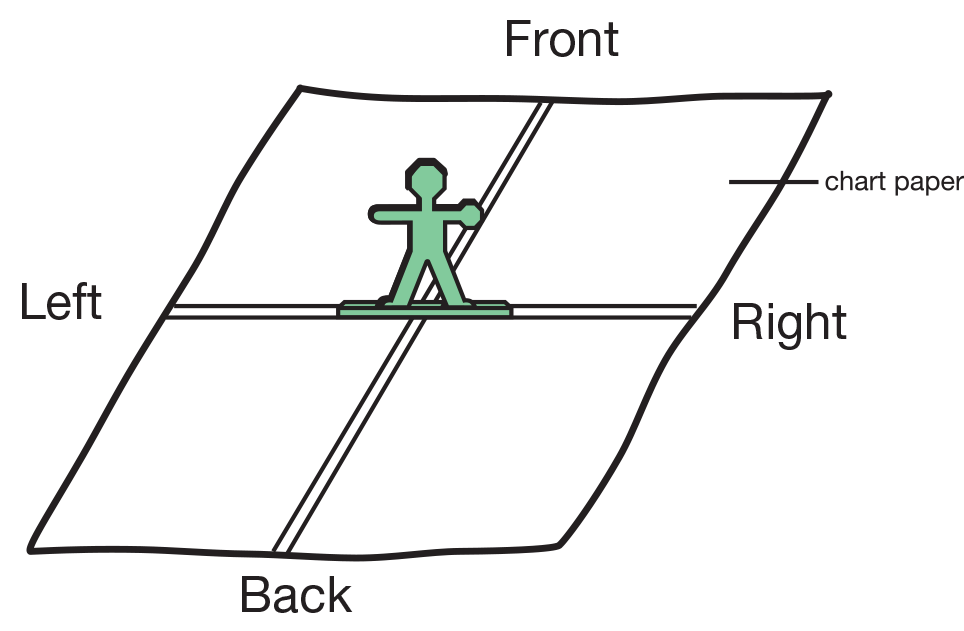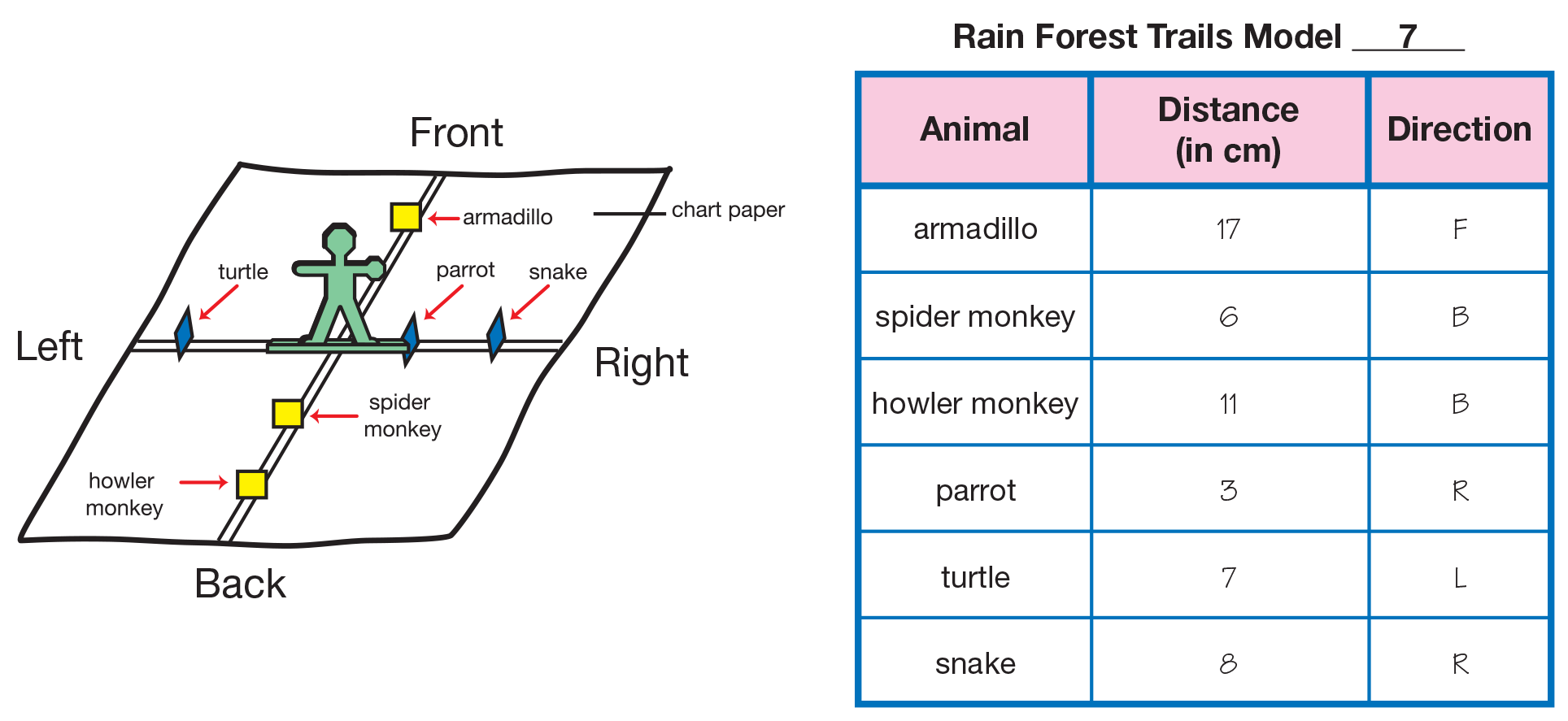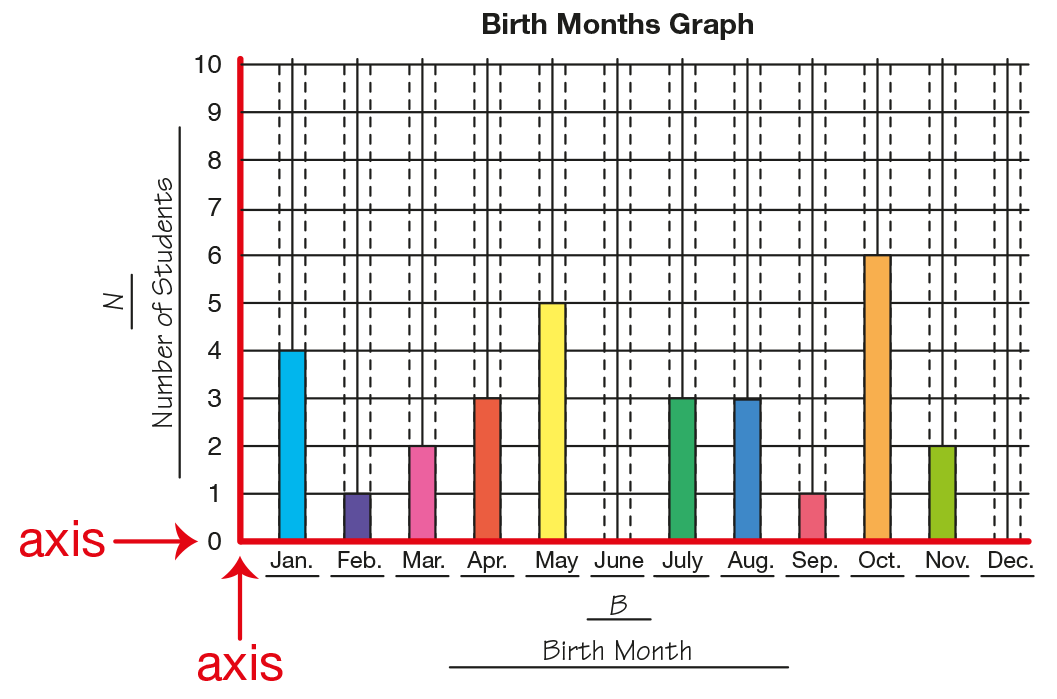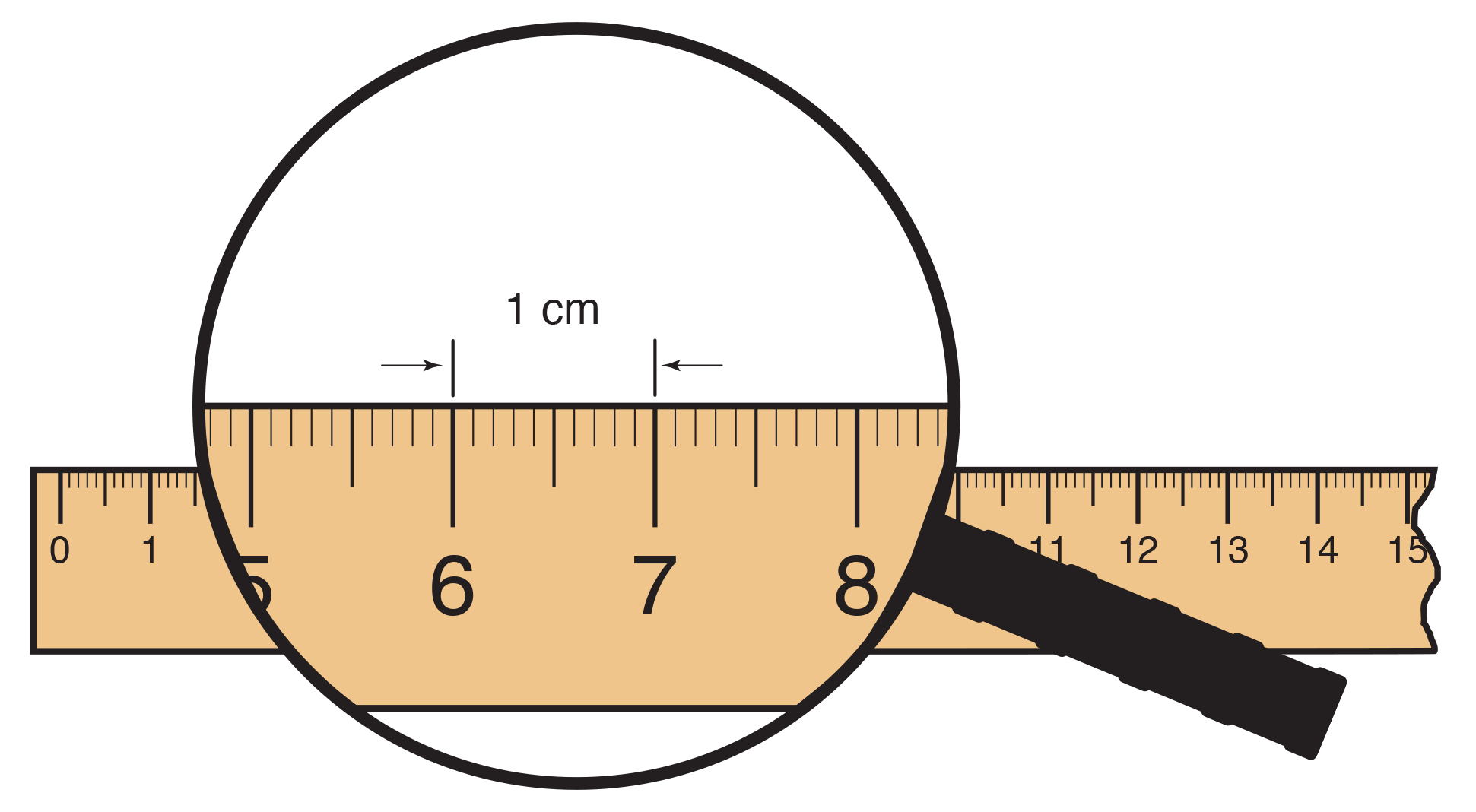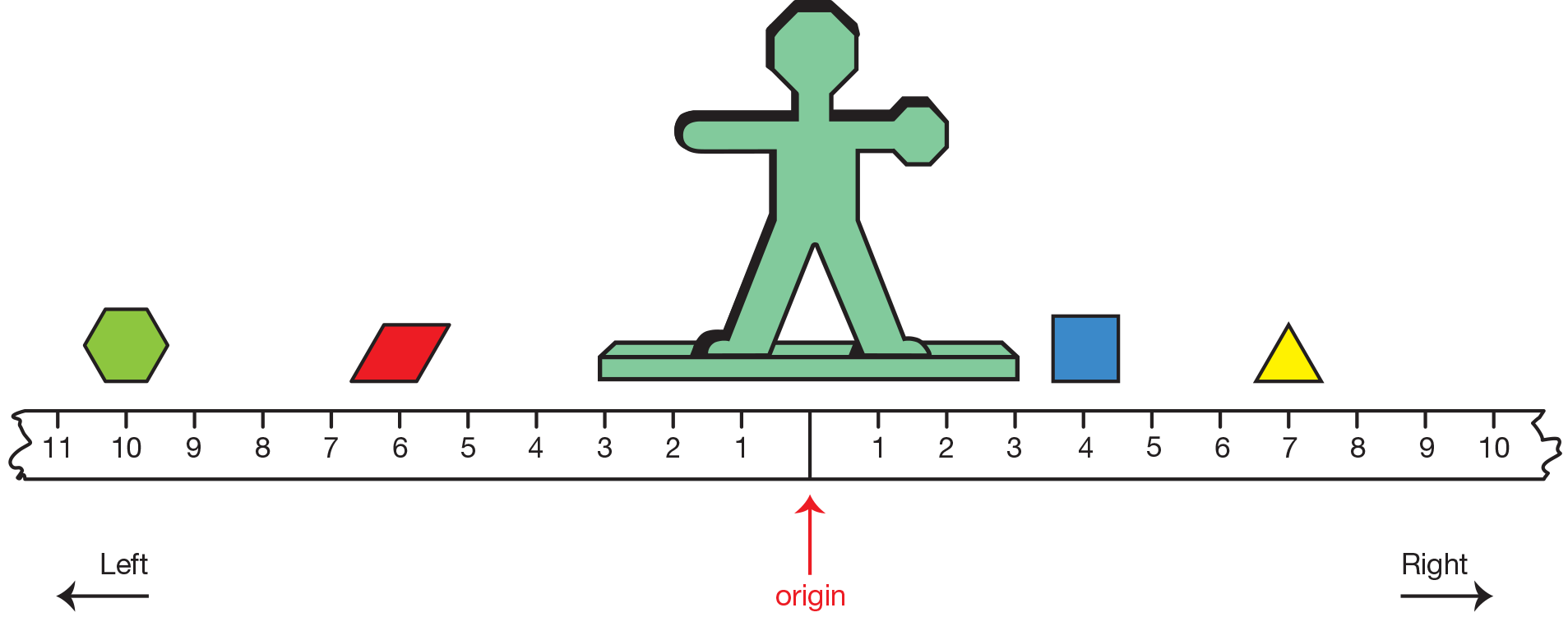Student groups create Rain Forest Trails models using two perpendicular axes with Mr. Origin at the origin. The groups exchange models and use direction and distance to describe the locations of animals plotted along the axes on the models. Students create maps of the models and compare the two representations. Finally, they use the maps and data tables to solve problems involving length.
Content in this Lesson
- Describing the location of objects relative to an origin using directions (left, right, front, back) and distance on perpendicular axes [E3].
- Locating objects on a map using directions (left, right, front, back) and
distance [E3]. - Measuring length in centimeters [E4].
- Making a table to find information about a data set [E5].
- Reading a table to find information about a data set [E6].
- Using a table to solve problems about a data set [E7].
- Solving word problems (e.g., compare) involving length.
- Using labels like centimeters and meters to show what numbers
mean [MPE6].
Daily Practice and Problems Q–V
Assessment in this Lesson
| Assessment | Expectation Assessed | MATH PRACTICES EXPECTATION ASSESSED |
|---|---|---|
|
Mr. Origin at the Park with Feedback Box Student Activity Book Pages 825–828 |
|
|
|
End-of-Year Test Teacher Guide - digital |
|















